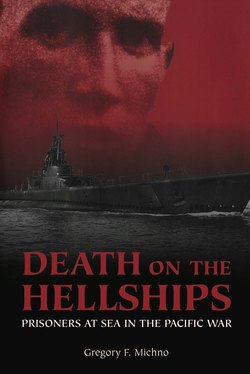Death on the Hellships

Описание книги
Though the Japanese treatment of prisoners of war during World War II has been written about before, only with this detailed chronicle will readers come to appreciate the true dimensions of the Allied POW experience at sea. It is a disturbing story; many believe the Bataan Death March pales by comparison. Survivors describe their ordeal in the Japanese hellships as the absolute worst experience of their captivity. Crammed by the thousands into the holds of the ships, moved from island to island and put to work, they endured all the horrors of the prison camps magnified tenfold.Gregory Michno draws on American, British, Australian, and Dutch POW accounts as well as Japanese convoy histories, recently declassified radio intelligence reports, and a wealth of archival sources to present a detailed picture of what happened. His findings are startling. More than 126,00 Allied prisoners were transported in the hellships with more than 21,000 fatalities. While beatings, starvation, and disease caused many of the deaths, the most, Michno reports, were caused by Allied bombs. Bullets, and torpedoes. He further reports that this so-called friendly fire was not always accidental—at times high-level decision were made to sink Japanese ships despite the presence of POWs. The statistics led Michno to conclude that it was more dangerous to be a prisoner on the Japanese hellships than a U.S. Marine fighting in the campaign. His careful examination of the role U.S. submarines in the sinkings and the rescue of POWs makes yet another significant contribution to the history of the Pacific war.
Отрывок из книги
RELOCATING THE POWS
AN UNEASY STASIS
.....
By early March, elements of the Japanese 4th and 21st Divisions had arrived to renew the battle. Ordered by President Franklin Roosevelt to vacate the Philippines, MacArthur left by PT boat on 11 March, leaving newly promoted Lt. Gen. Jonathan Wainwright in charge. To many of those left behind, “Dugout Doug” MacArthur had fled, leaving them holding the bag. The remnants of the U.S. 11th, 21st, 31st, 41st, 51st, 71st, and 91st Divisions would fight on, without additional supplies or reinforcements.
The end on Bataan came on 9 April, more the result of a lack of food, medicine, and supplies than Japanese assaults. Unable to continue the struggle, Gen. Edward P. King Jr. called it off. Some men were struck by the date; the last time a U.S. army had surrendered was also on 9 April, when Robert E. Lee did so at Appomattox in 1865.
.....
